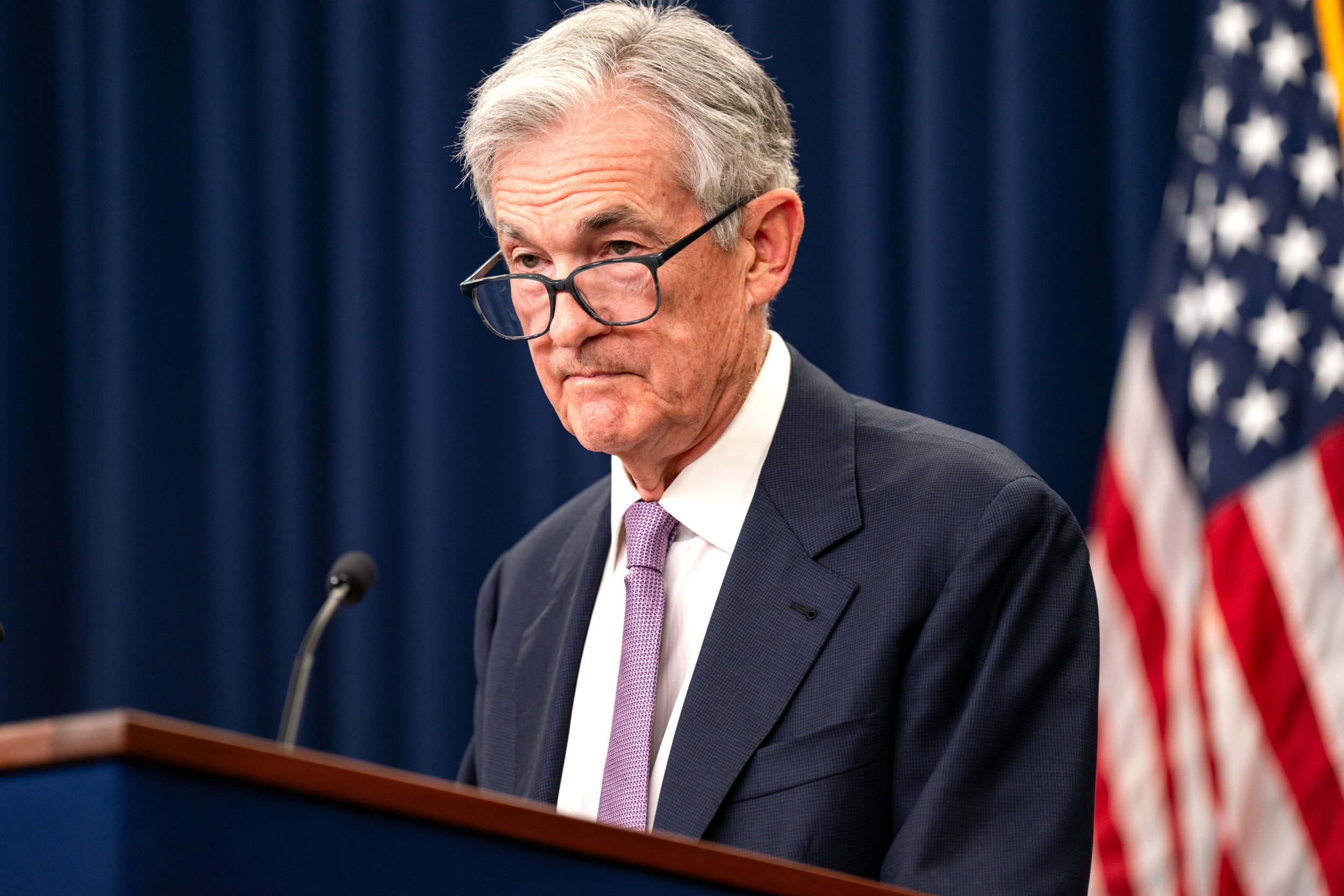
Federal Reserve Chairman Jerome Powell announced Thursday that the central bank cut its benchmark interest rate after inflation cooled in September.
After the Fed’s two-day meeting ended on Thursday, the central bank cut its benchmark interest rate, known as the federal funds rate, by a quarter-point to between 4.5 and 4.75 percent.
This is the second interest rate cut in four years. The federal funds rate was raised by the Fed 11 times in 2022 and 2023 to curb high inflation, which hit both the United States and countries around the world after the COVID-19 pandemic.
In September, the Fed cut rates to between 4.75 and 5 percent.
The federal funds rate is the target interest rate at which commercial banks borrow and lend their extra reserves to one another overnight. If the federal funds rate continues to decrease, the cost of consumer borrowing—including mortgages, auto loans and credit cards—should go down over time.
Kent Nishimura/Getty Images
Inflation Cooling
Inflation currently barely exceeds the Fed’s 2 percent target. Two different inflation gauges showed inflation between 2.1 to 2.4 percent in September.
According to the Consumer Price Index (CPI), the price of goods climbed just 2.4 percent in September from a year prior, the Labor Department reported on October 10.
On October 31, the Commerce Department reported that prices rose 2.1 percent in September from a year earlier, according to the Personal Consumption Expenditures Price Index (PCE).
Meanwhile, the economy grew at a 2.8 percent annual rate from July through September, the Commerce Department reported on October 30. Consumer spending helped drive this healthy economic growth.
Last quarter, consumer spending—which makes up roughly 70 percent of economic activity—increased to a 3.7 percent annual pace, which is up from 2.8 percent in the April to June period.
How Is the Job Market?
The number of Americans filing for unemployment benefits slightly increased last week as layoffs remain low.
Jobless claim applications climbed by 3,000 to 221,000 for the week ending November 2, the Labor Department reported Thursday. The four-week average for jobless claims, which helps to smooth out weekly volatility, dropped by 9,750 to 227,250.
Meanwhile, the Labor Department reported Friday that U.S. employers added just 12,000 jobs in October, which shows that job creation stalled as a likely consequence of the untimely combination of Hurricanes Helene and Milton and Boeing’s machinists’ strike.
The Fed said in a statement on Thursday that the “unemployment rate has moved up but remains low,” and while inflation has fallen closer to its 2 percent goal, it “remains somewhat elevated.”
How Can the U.S. Election Affect Interest Rates?
During a news conference on Thursday, Powell was asked how the election of former President Donald Trump might affect the central bank’s policymaking.
Powell said that “in the near term, the election will have no effects on our [interest rate] decisions.”
Investors expect faster economic growth, but also higher inflation and larger federal budget deficits under President-elect Trump.
Trump has proposed a 10 to 20 percent tariff on all imports and a 60 percent tariff on Chinese imports. He also called for lower tax rates and light regulation.
This article includes reporting from The Associated Press.
